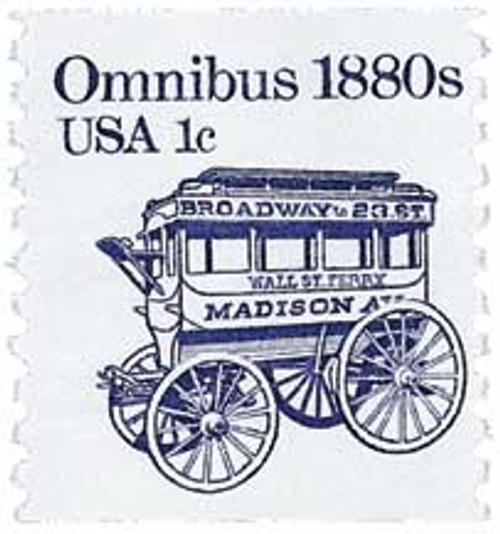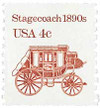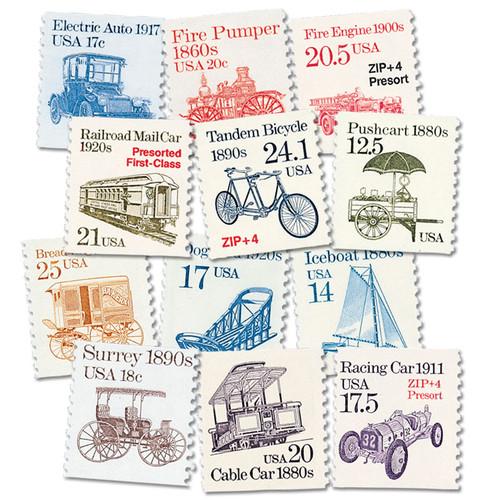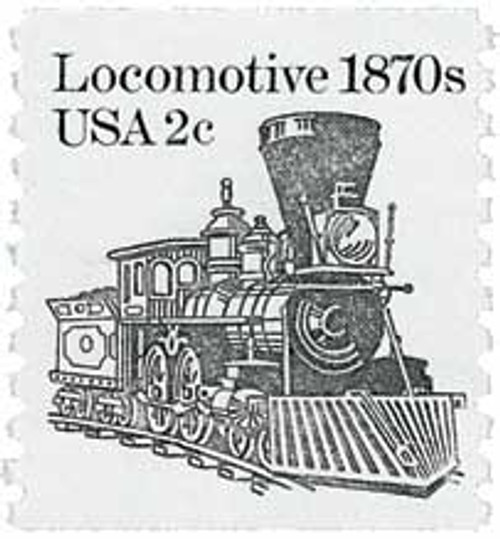
1982 4c Transportation Series: Stagecoach, 1890s
# 1898A - 1982 4c Transportation Series: Stagecoach, 1890s
$0.35 - $3.00
U.S. #1898A
1982 4¢ Stagecoach
Transportation Series
1982 4¢ Stagecoach
Transportation Series
Issue Date: August 19, 1982
City: Milwaukee, WI
City: Milwaukee, WI
Printed By: Bureau of Engraving and Printing
Printing Method: Engraved
Perforations: 10 vertically
Color: Reddish brown
During the 1700s and 1800s, the stagecoach traveled along regular routes carrying passengers and mail. Lines were established in colonial America as early as 1756 between the chief cities of Boston, New York, and Philadelphia. Other routes were gradually added on the East Coast, and lines were even established out West. Eventually, railroads took the place of this popular form of transportation.
The Transportation Series
A ground-breaking stamp was quietly issued on May 18, 1981. For the first time in U.S. history, a coil stamp featured its own unique design rather than simply copying that of the current definitive stamp. Fifty more coil stamps would be issued over the course of the next 15 years, each picturing a different mode of transportation.
The various denominations provided face values to exactly match the rates for several categories of Third Class mail (bulk rate and quantity-discounted mail). As the rates changed, new stamps with new values were added. Never before had a stamp series included so many fractional cent values.
Most of the stamps in the Transportation Series were printed by the Bureau of Engraving and Printing, although a few were printed by private contractors. All but a few of the later stamps were produced by engraved intaglio. Differences in precancels, tagging, paper and gum provide a large number of varieties.
U.S. #1898A
1982 4¢ Stagecoach
Transportation Series
1982 4¢ Stagecoach
Transportation Series
Issue Date: August 19, 1982
City: Milwaukee, WI
City: Milwaukee, WI
Printed By: Bureau of Engraving and Printing
Printing Method: Engraved
Perforations: 10 vertically
Color: Reddish brown
During the 1700s and 1800s, the stagecoach traveled along regular routes carrying passengers and mail. Lines were established in colonial America as early as 1756 between the chief cities of Boston, New York, and Philadelphia. Other routes were gradually added on the East Coast, and lines were even established out West. Eventually, railroads took the place of this popular form of transportation.
The Transportation Series
A ground-breaking stamp was quietly issued on May 18, 1981. For the first time in U.S. history, a coil stamp featured its own unique design rather than simply copying that of the current definitive stamp. Fifty more coil stamps would be issued over the course of the next 15 years, each picturing a different mode of transportation.
The various denominations provided face values to exactly match the rates for several categories of Third Class mail (bulk rate and quantity-discounted mail). As the rates changed, new stamps with new values were added. Never before had a stamp series included so many fractional cent values.
Most of the stamps in the Transportation Series were printed by the Bureau of Engraving and Printing, although a few were printed by private contractors. All but a few of the later stamps were produced by engraved intaglio. Differences in precancels, tagging, paper and gum provide a large number of varieties.






















